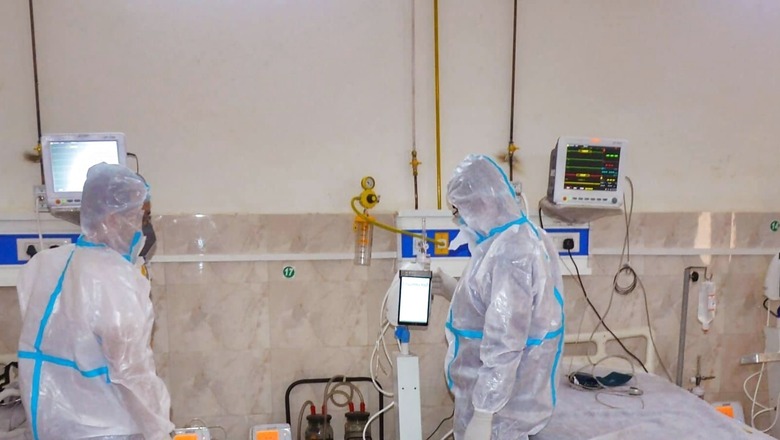
views
To help states prepare policies and make projections related to the Omicron-led Covid-19 third wave, the central government used a ‘simulation tool’ designed by the country’s apex health research body, the Indian Council of Medical Research (ICMR), News18 has learnt.
A simulator is a programme or machine that pretends to create a real-life situation. The device, created by the team of scientists at ICMR was led by Dr Samiran Panda, additional director general.
Using the mathematical projections made by the study published in the ICMR’s Indian Journal of Medical Research (IJMR) – titled “Plausibility of a third wave of COVID-19 in India: A mathematical modeling based analysis” – a simulator was developed.
The study was authored by scientists at ICMR, including Dr Balram Bhargava and Dr Panda along with Nimalan Arinaminpathy from the Imperial College, London.
“How a third wave could appear and behave was the focus of this modeling exercise,” Panda told News18. He further said the ICMR will soon release a detailed paper on the use of the simulator and benefits.
The name of the simulator is ‘CHROMIC’, which expands as “Collaborative Health Research On Modeling — ICMR and Imperial College.
The device, which can be used on a mobile phone or a computer, was provided to all states with data on the first and second waves. The state and district health officials were also trained to use these devices to generate accurate projections for the next wave. “The tool was used by the states to make projections related to the third wave. It helped the district and state health officials and policymakers a great deal in pandemic preparedness,” Panda said.
He further said the tool helped in preparing advisories related to travel following relaxation of restrictive measures.
What did the Mathematical Modeling Say?
The IJMR study using the mathematical modeling was released on June 25, last year, before the arrival of Omicron and third wave in India.
This study demonstrated plausible mechanisms by which a substantial third wave could occur, while also illustrating that it is unlikely for any such resurgence to be as large as the second wave.
It examined four potential mechanisms for causing the third wave – waning immunity making people susceptible, emergence of a new variant that is capable of escaping immunity to previously circulating strains, emergence of a new viral variant that is more transmissible than the previously circulating strains, and release of current lockdowns affording fresh opportunities for transmission.
The mathematical models in the study used for the projection of these four scenarios – one of which also predicted the spike in cases by the end of the year – was used to create the simulator, Panda said.
The critical details — such as how, when and where the simulator was used, how state and district officials were trained and what benefits states have reaped during the third wave — are likely to be released by the ICMR soon in a study.
Read all the Latest India News here



















Comments
0 comment